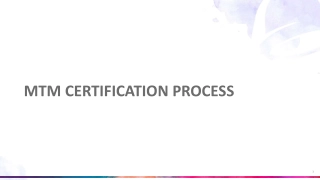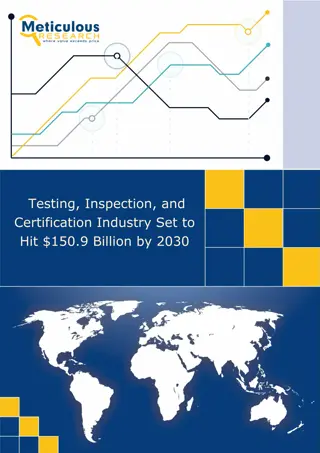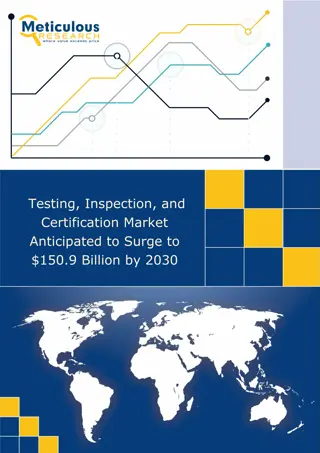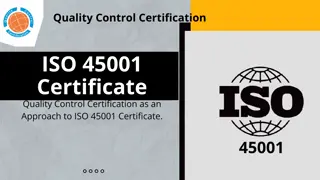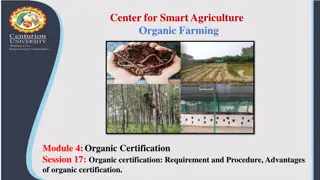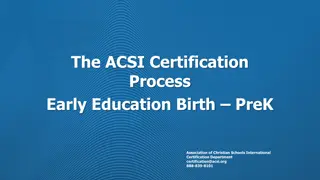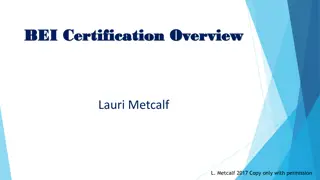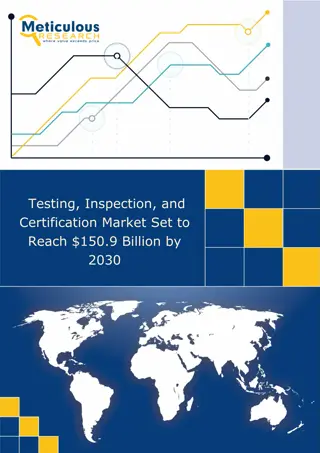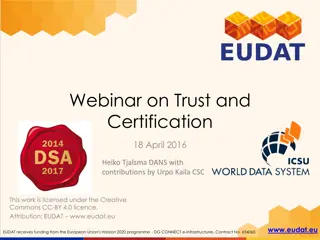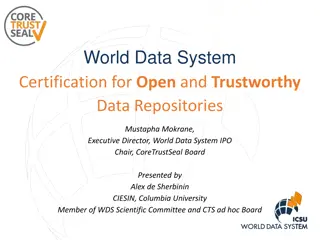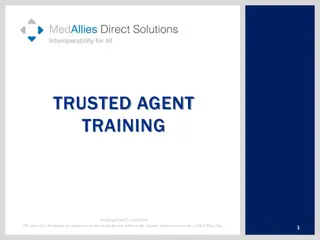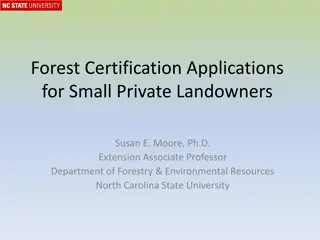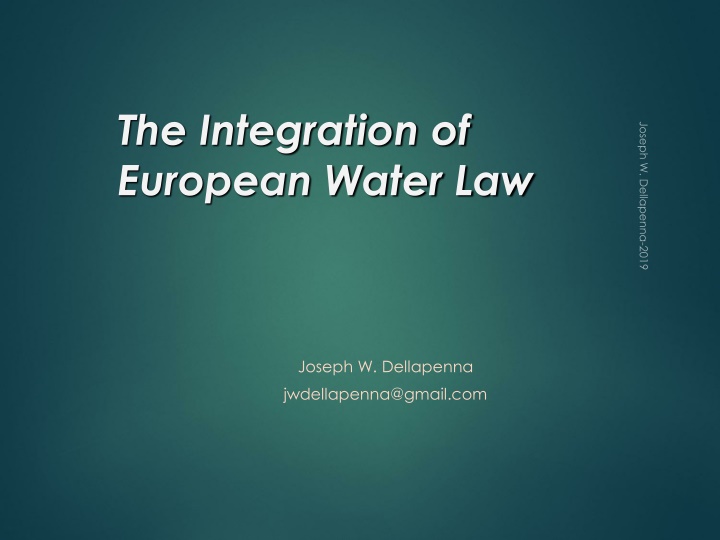
Trusted Data Services for Global Science Certification
Trusted Data Services for Global Science Certification of Data Services by Mustapha Mokrane, WDS Executive Director, explores the importance of certifying operational components like analysis centers and data products centers for data infrastructure serving scientific research. Examples of WDS data services such as IGS and other data services like weather and climate information systems are discussed, emphasizing the need for certification to establish trustworthiness in data products.
Download Presentation

Please find below an Image/Link to download the presentation.
The content on the website is provided AS IS for your information and personal use only. It may not be sold, licensed, or shared on other websites without obtaining consent from the author. If you encounter any issues during the download, it is possible that the publisher has removed the file from their server.
You are allowed to download the files provided on this website for personal or commercial use, subject to the condition that they are used lawfully. All files are the property of their respective owners.
The content on the website is provided AS IS for your information and personal use only. It may not be sold, licensed, or shared on other websites without obtaining consent from the author.
E N D
Presentation Transcript
The Integration of European Water Law Joseph W. Dellapenna jwdellapenna@gmail.com
Early Directives on Water Quality The first wave of directives (1970s-1980s): Water quality objectives: Drinking water 75/440/EEC Bathing water quality 76/160/EEC Fishing waters 78/659/EEC Water emission standards: Protection of waters against dangerous substances 76/464/EEC Groundwater 80/86/EEC The second wave of directives (1990s): Urban wastewater treatment 91/271/EC Nitrates from agricultural sources 91/676/EC Integrated pollution prevention and control 96/61/EC Generally a top-down approach Standards are set by the EU, specifying the precise level fo water quality or of emissions to be achieved (an obligation of result rather than of measures to be applied Some discretion in states as to which water bodies are subject to which standard Some directives establish rights for individuals
Problems with Early Water Directives Little or no attention to transboundary effects Protection was sectoral or functional Fragmented and unintegrated With little attention to ecological concerns No attention to freshwater supply No attention to flooding No attention to climate disruption
The Shift to Protection of the Aquatic Environment A third wave of directives beginning in 2000 went in a different direction, including: The European Water (2000/60/EC) Reissuing earlier directives on dangerous substances (2006/11/EC) and integrated pollution prevention and control (2008/1/EC) The European Water Framework Directive (2000/60/EC) set forth a new approach: Establishing a framework for the protection of inland surface waters, transitional waters, coastal waters, and groundwater Replacing the earlier directives on bathing water quality and groundwater To prevent further deterioration of water quality To promote sustainability To enhance and improve protection of the aquatic environment To ensure progressive reduction of pollution of groundwater Framework Directive
Goals of the Water Framework Directive To mitigate the effects of floods and droughts A new floods directive 2007/60, which is not very detailed because of concerns about subsidiarity Member states retain authority over land use planning To provide sufficient good quality surface water and groundwater for sustainable, balanced, and equitable water use To protect territorial and marine waters, and To achieving the objectives of relevant international agreements To identify particular river basins and assign them to river basin districts as the main unit for river basin management To identify protected areas To promote transboundary cooperation both within the Union and with non-EU members To achieve good water quality and fulfill water objectives for protected areas by 2015
Integrating Water Management River basin management is to integrate surface waters, groundwater, the aquatic environment, chemical biological (ecological) quality Commission is to: Address problems beyond the capacity of a single state List priority substances to be regulated Relation to other water directives: Some (drinking water, groundwater, hazardous substances, etc.) are absorbed into the Water Framework Directive Some continue as (integrated pollution prevention and control, urban wastewater management, the habitat direction, impact assessment requirements) quality, and separate directives
Obligations of Member States Each member state was to: Develop a working program by 2006 Identify water management problems (2007) Develop (with public participation) a management plan by 2009, to be renewed every six years Coordinate with other states for transboundary river basin districts (if coordination fails, the state is to report to the Commission which is to act within six months) Identify protected areas and waters used as sources of drinking water Monitor the status of waters and protected areas Implement best practices and emission limits for both point sources and diffused sources by 2012 Ensure good water quality status for surface waters and good quantitative status for groundwater Recover of costs of water services beginning not later than 2010 Provide annual reports on the above to the Commission States have fallen behind the required schedule

